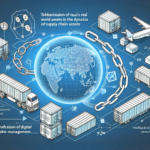Understanding Real-Time Trading Analytics
Defining Real-Time Trading Analytics
Real-time trading analytics refers to the analysis of financial data and market trends that occur at the moment. It involves processing vast amounts of data to provide traders and analysts with actionable insights instantly. The primary goal is to help make informed decisions, manage risks, and optimize trading strategies effectively.
The Importance of Speed and Accuracy
In trading, milliseconds can make a difference between profit and loss. As such, real-time analytics tools need to be both fast and accurate. Innovations in artificial intelligence technology have transformed this crucial area, enhancing the speed of data processing and the precision of insights generated.
AI Innovations Revolutionizing Real-Time Trading Analytics
Machine Learning Algorithms
Machine learning (ML) serves as the backbone of many innovative tools in real-time trading analytics. These algorithms can learn from historical data and identify patterns to predict future market behavior. By continuously adapting to new data, ML provides traders with often unprecedented insights into potential price movements and market trends.
Predictive Analytics
Predictive analytics is a powerful application of machine learning, leveraging historical trading data to forecast future trends. In real-time trading, this means that traders can receive alerts based on predicted price movements before they occur. Companies are increasingly using ML algorithms to fine-tune these predictions, improving their reliability and specificity.
Sentiment Analysis
AI-driven sentiment analysis tools scan headlines, social media posts, and financial news in real-time to gauge public sentiment about specific stocks or financial markets. By analyzing the positive or negative sentiment, traders can adjust their strategies proactively. For instance, if sentiment around a stock turns sharply negative, AI can flag that to traders immediately.
Natural Language Processing (NLP)
NLP is another crucial innovation in AI technology that radically enhances trading analytics. It enables machines to understand, interpret, and respond to human language in a valuable manner.
Data Extraction from News and Reports
Traders must often sift through extensive news articles and reports for relevant information. NLP algorithms can automate this process. By extracting relevant data such as earnings reports or economic indicators, these systems provide traders with focused insights without the need for extensive manual research.
Voice-Activated Trading
Voice recognition technology is increasingly being utilized in trading platforms. Through NLP, traders can execute commands and inquiries using voice activation. This innovation allows traders to act rapidly and efficiently, even in fast-paced market environments.
Real-time Risk Management Tools
AI innovations are also making waves in risk management by providing real-time analytics on potential risks associated with trading strategies.
Dynamic Portfolio Optimization
AI analyses various metrics, including asset correlations and market volatility, to dynamically adjust portfolios in real time. This means traders can better manage their risk exposure based on current market conditions. Instead of static strategies that might become irrelevant quickly, AI helps create adaptive strategies that respond to live market signals.
Fraud Detection and Prevention
With the rise of online trading, the threat of fraud has also increased. AI technology can analyze trading patterns to identify anomalies that could indicate fraudulent behavior. By flagging unusual activities in real-time, traders and institutions can take preventive measures before significant damage is done.
The Role of Big Data in AI Trading Analytics
Harnessing Big Data
The ability to analyze big data is a game-changer for real-time trading analytics. Financial markets generate an enormous amount of data every second, and AI technologies can process and analyze this information at warp speed.
Data Integration from Multiple Sources
AI systems can aggregate data from multiple sources, including social media, trading volumes, market news, and economic indicators. This comprehensive view enables traders to make more informed decisions backed by diverse data points. AI algorithms can correlate information in ways that human analysts might miss, uncovering nuanced market insights.
Cloud Computing
Cloud technology facilitates the storage and processing of vast amounts of trading data, allowing for greater accessibility.
Enhanced Computational Power
Cloud services offer scalable computational power, essential for analyzing complex algorithms in real time. With the ability to process data dynamically, traders can quickly run simulations or make adjustments based on the latest data.
Accessibility Across Platforms
Cloud-based trading platforms allow traders to access their tools and data from anywhere, whether they are in the office or on the move. This flexibility is vital in real-time trading, where opportunities can emerge unexpectedly.
The Future of AI in Real-Time Trading Analytics
Continuous Learning and Adaptation
As markets evolve, so do trading strategies. The future of AI in trading will be marked by continuous learning capabilities that allow algorithms to grow more accurate over time.
Self-Optimizing Algorithms
These algorithms can autonomously adjust their parameters based on incoming data, leading to perpetual improvement in predictive accuracy. This means that as market conditions shift, these systems can adapt without requiring human intervention.
Integrating Human Intelligence with AI
While AI offers robust analytics, the fusion of human insight with machine intelligence will likely drive future innovations.
Collaborative Tools for Traders
Providing traders with tools that combine machine learning insights with human decision-making can create a more holistic trading strategy. This symbiosis can lead to improved accuracy in predictions while ensuring that traders apply their experience and intuition.
Conclusion of AI Innovations in Trading
The landscape of real-time trading analytics is rapidly evolving due to innovations in AI technology. Enhanced predictive analytics, sentiment analysis, big data processing, and the integration of multiple technologies signal a transformative future for trading. As these technologies develop, they promise to empower traders and redefine strategies in the financial markets.








